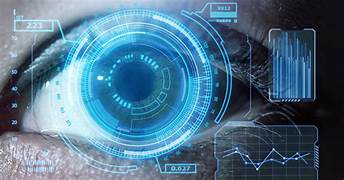Computer vision is a field of computer science that deals with the extraction of meaningful information from digital images or videos. This information can be used for a variety of purposes, such as object recognition, scene understanding, and face detection. Computer vision is a rapidly growing field, with new applications being developed all the time.
One of the most important tasks in computer vision is object recognition. Object recognition is the ability to identify objects in images or videos. This can be done by comparing the image to a database of known objects, or by using machine learning algorithms to learn to recognize objects from examples. Object recognition is used in a wide variety of applications, such as self-driving cars, facial recognition software, and image search engines.
Another important task in computer vision is scene understanding. Scene understanding is the ability to understand the layout of a scene from a single image or video. This can be done by identifying objects in the scene, understanding their relationships to each other, and determining the scene’s overall meaning. Scene understanding is used in a wide variety of applications, such as augmented reality, robotics, and video games.
Face detection is another important task in computer vision. Face detection is the ability to automatically detect human faces in images or videos. This can be used for a variety of purposes, such as facial recognition, video surveillance, and social media filters.
Computer vision is a challenging field, but it is also a very rewarding one. Computer vision algorithms are used in a wide variety of applications, and they are constantly being improved. As computer vision technology continues to develop, we can expect to see even more amazing applications in the future.
Here are some of the most important applications of computer vision:
- Self-driving cars: Computer vision is used to help self-driving cars navigate the road and avoid obstacles.
- Facial recognition: Computer vision is used to identify people in images and videos. This is used for a variety of purposes, such as security, access control, and social media.
- Image search engines: Computer vision is used to index and search images. This allows users to find images that are relevant to their search terms.
- Augmented reality: Computer vision is used to overlay digital information on top of the real world. This is used for a variety of purposes, such as gaming, education, and training.
- Robotics: Computer vision is used to help robots navigate their environment and interact with objects.
Computer vision is a rapidly growing field with a wide range of applications. As computer vision technology continues to develop, we can expect to see even more amazing applications in the future.
Here are some of the challenges that computer vision researchers are working on:
- Object recognition in cluttered scenes: One of the biggest challenges in object recognition is dealing with cluttered scenes. In a cluttered scene, there are many objects that can be mistaken for the object that you are trying to recognize.
- Scene understanding: Scene understanding is another challenging problem. In order to understand a scene, you need to be able to identify the objects in the scene, understand their relationships to each other, and determine the scene’s overall meaning.
- Face detection in low-quality images: Face detection in low-quality images is another challenging problem. Low-quality images are often blurry, have poor lighting, or have other problems that make it difficult to detect faces.
- Real-time object tracking: Real-time object tracking is the ability to track the movement of objects in real time. This is a challenging problem because it requires the computer to be able to process images very quickly.
Computer vision is a complex and challenging field, but it is also a very rewarding one. Computer vision algorithms are used in a wide variety of applications, and they are constantly being improved. As computer vision technology continues to develop, we can expect to see even more amazing applications in the future.














